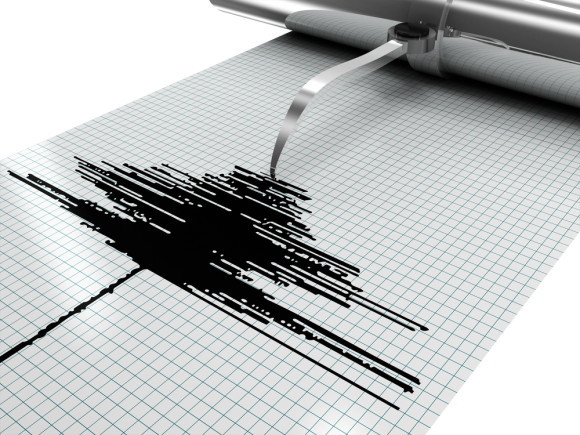The Oklahoma Corporation Commission’s (OCC) Oil and Gas Conservation Division (OGCD), in response to the risk of triggered earthquakes, announced actions to further reduce the amount of oil and gas wastewater injected by Arbuckle disposal wells in earthquake areas and increase the size of the so-called “yellow light” area in Central Oklahoma.
OGCD director Tim Baker says the central Oklahoma action will cover more than 5,000 square miles and more than 400 Arbuckle disposal wells. It is similar to the regional response strategy that was instituted in western Oklahoma on February 16.
“The western and central Oklahoma actions combined cover over 10,000 square miles and more than 600 Arbuckle disposal wells.” Baker said.
“This means a reduction of more than 300,000 barrels a day from the 2015 average injection volumes,” Baker explained.
In a separate action, the OGCD is also expanding the size of the “Area of Interest” (AOI), bringing more restrictions to disposal well operations in areas that have not yet seen major earthquake activity.
“This will result in 118 more Arbuckle disposal wells being covered by so-called “yellow light” earthquake precautions. These include having to prove the well has not been drilled too deep in order to keep operating, and daily and weekly volume recording and reporting requirements,” Baker said. “It also eliminates the possibility of administrative approval of a new Arbuckle disposal well application.”
The AOI expansion is a proactive move to get ahead of the earthquake activity.
“The central Oklahoma volume reduction plan covers an area where we have taken numerous, localized actions over the past 12 months, such as in the Cushing, Crescent, and Edmond areas. But the research and data has grown to provide the basis needed to both expand into a regional approach for volume reduction and increase the size of the AOI.” said Baker.
Baker said the speed at which the latest actions were developed is a major step forward.
“Our working relationship with the Oklahoma Geological Survey continues to bear more fruit, greatly helped by the fact that we have been able to add staff to the earthquake effort as a result of the emergency funding from Governor Fallin and grants from the Oklahoma Energy Resources Board and the Groundwater Protection Council,” said Baker. “We have also begun the process of a huge upgrade in our computing power, which will give us far more powerful tools and provide more data to researchers.”
The central Oklahoma volume reduction plan will be phased in over two months in keeping with recommendations from researchers, who warn against sudden pressure changes. The first stage started on March 7.
Notification of well operators began on March 3. It is important to note that researchers agree that any decrease in earthquakes that may result from such plans is rarely immediate, and must be evaluated over the course of several months.
Source: OCC
Related:
- Oklahoma Orders Reduction in Wastewater Disposal after Quakes
- Quakes Spur more Study of Wells by Oklahoma Corp. Commission
- Earthquake Response Legislation Passes Oklahoma House Panel
- Oklahoma Orders Shut Down of Injection Well After Quakes
Topics Catastrophe Natural Disasters Oklahoma
Was this article valuable?
Here are more articles you may enjoy.



 FBI Involved After Two Florida Injury Lawyers Go Missing From Fishing Trip
FBI Involved After Two Florida Injury Lawyers Go Missing From Fishing Trip  10 Highest Class-Action Settlements in 2025 Eclipsed $70B Total: Duane Morris
10 Highest Class-Action Settlements in 2025 Eclipsed $70B Total: Duane Morris  Private Equity Firms Expected to Unleash Middle-Market M&A Deals, Survey Says
Private Equity Firms Expected to Unleash Middle-Market M&A Deals, Survey Says  High-Net-Worth Risk Appetite Drops as Some Regions Show Stabilization
High-Net-Worth Risk Appetite Drops as Some Regions Show Stabilization 

